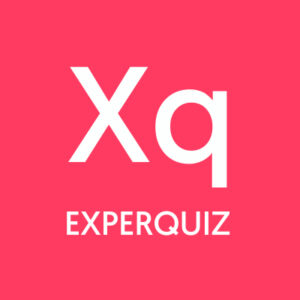Assessment: A Powerful Learning Tool
In the world of professional training, assessment is a powerful tool to help with the acquisition of knowledge and skills. Unfortunately, this tool is often used too little or even poorly exploited and is only limited to end-of-course evaluations to confirm the acquisition, or not, of the concepts seen during the training. But assessment, particularly in the fields of education, human resources, and management, can take several forms depending on the objectives, contexts, and methods used.
Types Of Assessment To Use
Diagnostic Assessment
The aim of a diagnostic assessment is to identify a person’s level of knowledge or skills before the start of an apprenticeship or training. It is generally carried out before the start of training or a course in order to be able to situate the learners level. The diagnostic assessment and the summative assessment can be complementary, in particular to know precisely the effectiveness of training by comparing the level of knowledge at the beginning and at the end of the training. Diagnostic assessment can, for example, be used to place students in level groups.
Formative Assessment
This type of evaluation can take the form of short, regular quizzes which are submitted between stages of an eLearning module. The goal of a formative assessment is to enrich the learning process by energizing it. In particular, it makes the learner active by confronting them with several choices. This type of assessment is particularly effective to help learners assimilate knowledge, and is relatively simple to set up. Formative assessment can also be used to monitor the progress of knowledge acquisition and, if gaps are identified, help the learners with additional content.
Summative Assessment
The aim of a summative assessment is to measure the level of skill or knowledge achieved at the end of a learning period or training. It is often used to award grades or qualifications and takes place under controlled conditions (limited times, exam monitoring, number of tries, etc.). Summative assessments can, for example, be used at the end of an eLearning module to validate knowledge and allow the learner to move on to the next eLearning module.
Certification Assessment
The certification assessment is a summative assessment which will also deliver a professional certification or a diploma in the event of success. Its objective is to accredit or certify skills or knowledge and must take place under controlled conditions, whether digitally or in person, to be credible.
Normative Assessment
This type of assessment does not aim to measure a person’s knowledge but rather to compare the performance of individuals against each other, often in a competitive context. In particular, it makes it possible to obtain a ranking such as school rankings or entrance exams to major schools. Normative assessments must therefore also take place under controlled conditions and it may be necessary to use a real exam monitoring solution when it takes place digitally.
Criterion-Referenced Assessment
Criterion-referenced assessment allows the performance of an individual to be measured against predefined criteria or standards, independent of the performance of others. Criterion-based assessments differ from summative assessments in that it is necessary to validate several criteria to succeed and not only to obtain a sufficient overall score. This type of assessment is, for example, used during the driving test to obtain a driving license where the exam is based on objective criteria (compliance with the highway code, correct maneuvers, etc.).
Self-Assessment
As its name suggests, self-assessment will allow learners or employees to evaluate themselves in order to reflect on their own performance and improve. It is often used during or after a learning process or a project and the questions do not have any right or wrong answers per se.
Participatory Assessment
Peer review collects evaluations from people who work in similar situations or who have a comparable level of knowledge. This type of assessment is often used during or after collaborative learning or a team project.
Continuous Assessment
Continuous assessment is used in the school curriculum. It makes it possible to continuously and regularly measure a person’s knowledge to obtain a global and dynamic vision of progress or performance. Continuous assessment therefore takes place throughout a project or training period.
Assessment Is A Specialty
Each form of assessment has its own objectives, advantages, and disadvantages, and the choice of method depends on the desired results and the context of application. To exploit their potential, it is essential to use a reliable and complete solution both in terms of functionalities and options but also in terms of statistical analysis of the results.

ExperQuiz
The fully featured LMS focused on assessment to maximize learning and skills management !
Originally published at www.experquiz.com.

